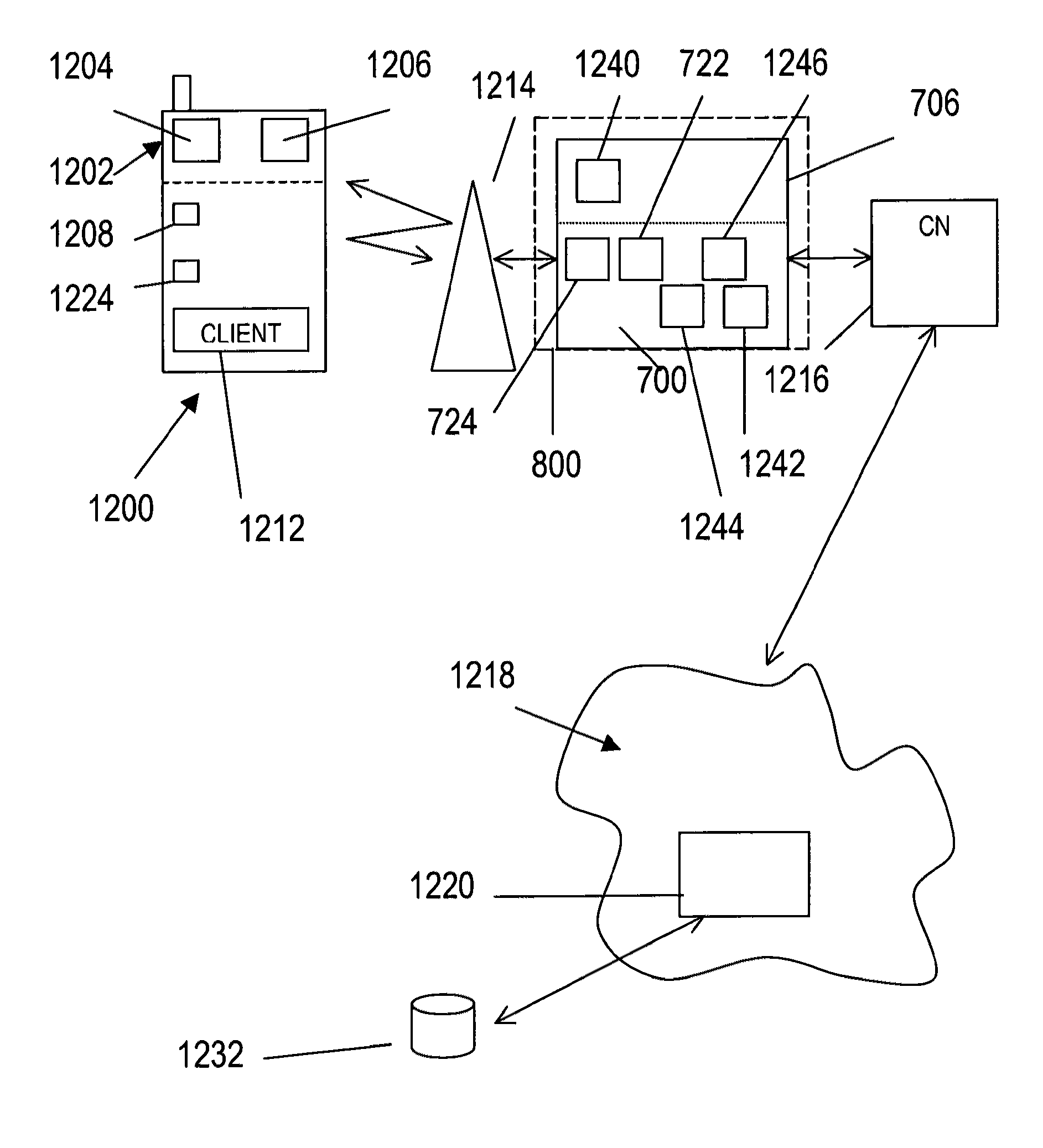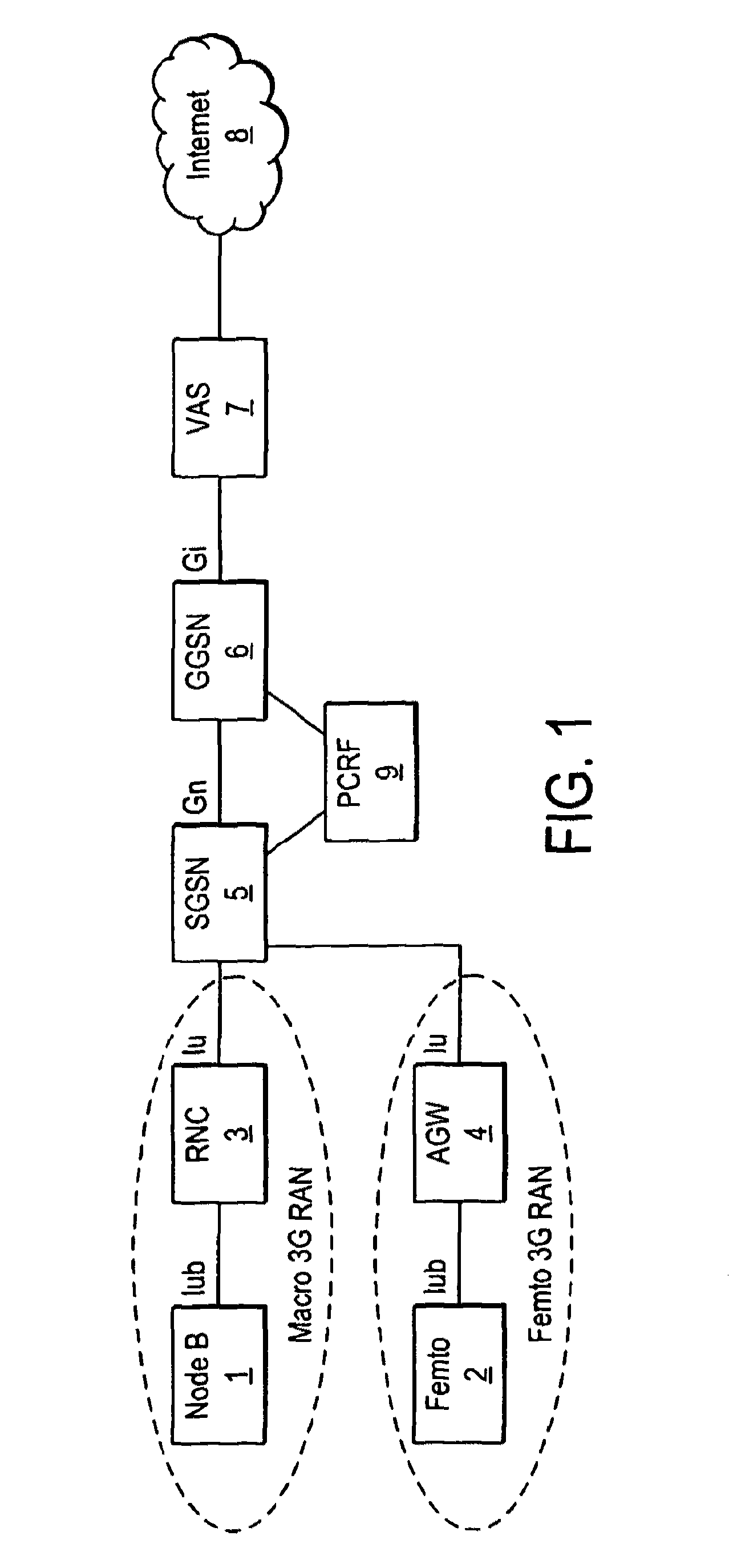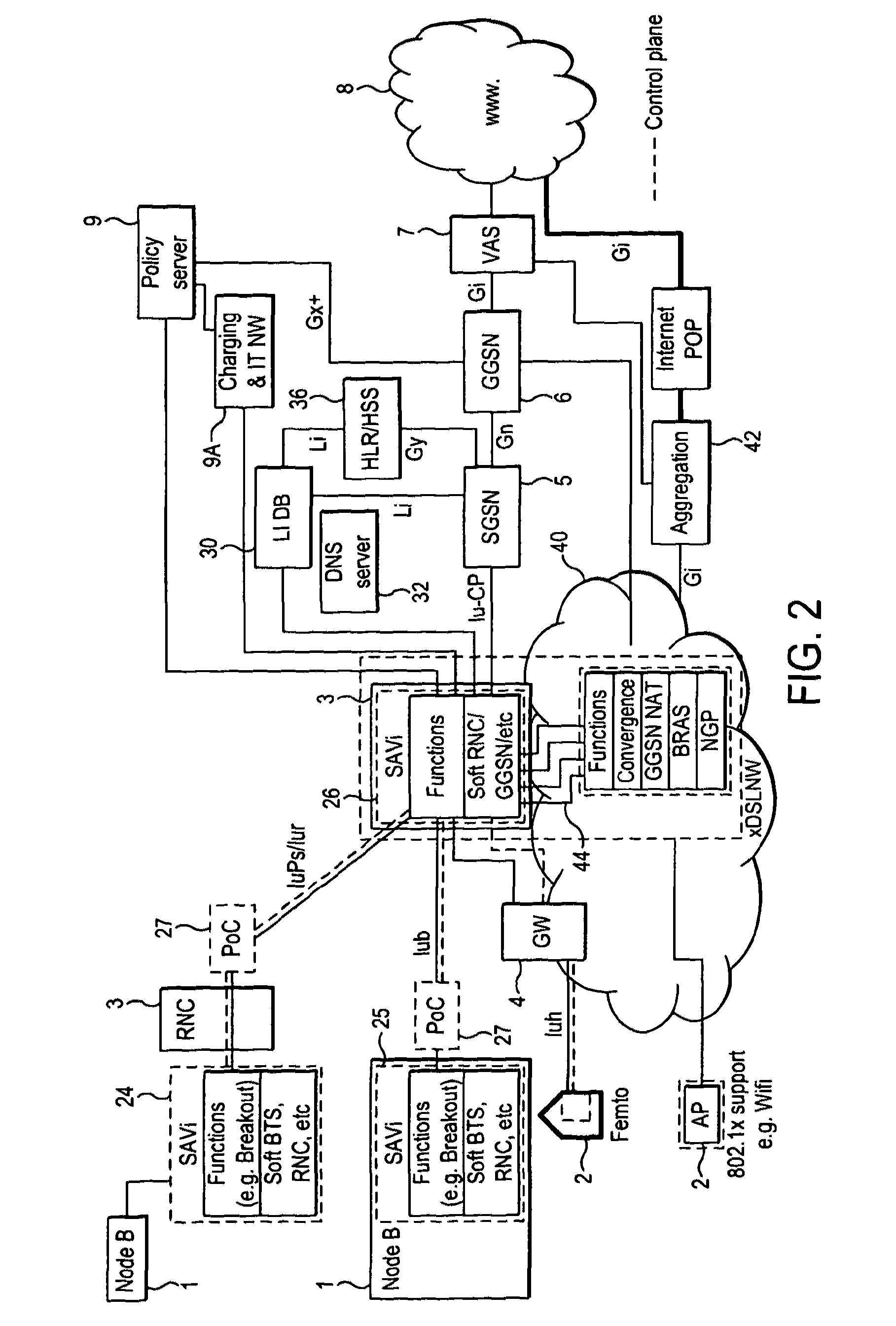Telecommunication networks
a technology of telecommunication networks and mobile networks, applied in the field of mobile telecommunications networks, can solve the problems of increasing data traffic jams, increasing the cost of supporting this data volume, and limiting the capacity of mobile networks, so as to achieve the effect of greater resolution
- Summary
- Abstract
- Description
- Claims
- Application Information
AI Technical Summary
Benefits of technology
Problems solved by technology
Method used
Image
Examples
Embodiment Construction
[0155]Certain elements of a 3G mobile telecommunications network, and its operation, will now briefly be described with reference to FIG. 1.
[0156]Each base station (e.g., Node B 1 and Femto 2) corresponds to a respective cell of the cellular or mobile telecommunications network and receives calls from and transmits calls to a mobile terminal (not shown) in that cell by wireless radio communication in one or both of the circuit switched or packet switched domains. The mobile terminal may be any portable telecommunications device, including a handheld mobile telephone, a personal digital assistant (PDA) or a laptop computer equipped with a network access datacard.
[0157]The nodeB 1 or Femto 2 can be considered to comprise two main parts: a radio frequency part and a baseband part. The radio frequency part handles the transmission of radio frequency signals between the antenna of the nodeB 1 or Femto 2 and the mobile terminal, and for converting radio frequency signals into digital base...
PUM
 Login to View More
Login to View More Abstract
Description
Claims
Application Information
 Login to View More
Login to View More - R&D
- Intellectual Property
- Life Sciences
- Materials
- Tech Scout
- Unparalleled Data Quality
- Higher Quality Content
- 60% Fewer Hallucinations
Browse by: Latest US Patents, China's latest patents, Technical Efficacy Thesaurus, Application Domain, Technology Topic, Popular Technical Reports.
© 2025 PatSnap. All rights reserved.Legal|Privacy policy|Modern Slavery Act Transparency Statement|Sitemap|About US| Contact US: help@patsnap.com



